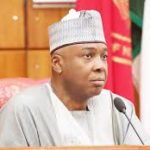
The World Bank has projected that poverty will increase in Nigeria by three percentage points in five years to 2027. The World Bank made this projection in its Africa Pulse report released on the sidelines of the ongoing Spring Meetings of the IMF and World Bank in Washington DC. The report, among other information, painted a dire picture of poverty in Nigeria, noting that while economic activity has shown some positive signs, the underlying challenges associated with resource dependence and fragility are projected to escalate poverty levels, demanding focused and effective governance reforms and inclusive economic policies.
The report noted that while Nigeria saw higher-than-expected economic growth in the final quarter of 2024, particularly in its non-oil sector, the country’s status as a resource-rich and fragile nation means it faces a concerning outlook for poverty reduction. The report indicates that poverty rates in resource-rich, fragile countries, including Nigeria, are expected to increase by 3.6 percentage points between 2022 and 2027, making it the only group in Sub-Saharan Africa with a projected rise in poverty.
The report stated: “Sub-Saharan Africa has the highest extreme poverty rate globally, and a large share of the poor is concentrated in a few countries. About 80 percent of the world’s estimated 695 million extreme poor resided in Sub-Saharan Africa in 2024, compared to 8 percent in South Asia, 2 percent in East Asia and the Pacific, 5 percent in the Middle East and North Africa, and 3 percent in Latin America and the Caribbean.”Within Sub-Saharan Africa, half of the 560 million extreme poor in 2024 resided in four countries. Non-resource-rich countries are expected to continue reducing poverty faster than resource-rich countries. “Thanks to higher prices of agricultural commodities, non-
Consequently, the report suggests that for resource-rich countries like Nigeria, improving fiscal management and developing a stronger fiscal contract with citizens is crucial.


